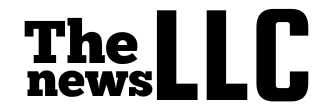The Hells Angels Motorcycle Club (HAMC) is one of the most recognized and influential outlaw motorcycle clubs in the world. More than just an organization, it is a brotherhood built on loyalty, respect, and a strict code of conduct. One of the most distinguishing features of its members is the patches they wear on their jackets and vests. These patches, often called “colors,” are not just decorative—they hold deep meanings that indicate rank, achievements, and commitment within the club.
This article explores the significance of these patches, their symbolism, and the traditions behind them.
The Iconic “Death Head” Logo
At the core of the Hells Angels’ identity is the “Death Head” logo, a winged skull wearing a motorcycle helmet. This logo is the club’s most recognizable symbol and is strictly reserved for full-patch members. Originally designed in the 1950s, the Death Head has evolved over time, but it remains a sacred emblem among Hells Angels members.
The Death Head represents several things: fearlessness, independence, and a strong commitment to the club’s values. The logo is usually displayed on the back of a leather vest or jacket, accompanied by the club’s name and the region or chapter to which the member belongs. Unauthorized use of the Death Head by non-members is not tolerated, and the club takes serious action to protect its insignia.
The “81” Patch: A Numerical Representation
Numbers play an important role in the symbolism of the Hells Angels. The number “81” is an abbreviation for “Hells Angels,” with “H” being the 8th letter of the alphabet and “A” being the 1st. This patch is commonly worn by both members and supporters to subtly display their affiliation with the club.
Supporters of the Hells Angels who are not full members often wear “Support 81” gear as a way of expressing their respect for the club. While supporters can wear this patch, it is crucial to note that the official club patches, including the Death Head, are strictly reserved for full members.
“AFFA”: A Testament to Brotherhood
Another common patch seen on Hells Angels members is “AFFA,” which stands for “Angels Forever, Forever Angels.” This phrase signifies lifelong loyalty to the club. Once a person becomes a Hells Angel, they are expected to uphold the club’s values for life.
The AFFA patch is more than just a symbol—it represents the deep brotherhood that binds members together. Leaving the club is not an easy process, and wearing this patch means that a member is fully committed to the lifestyle and the rules of the organization.
The “1%” Diamond Patch
The “1%” patch is a small diamond-shaped emblem worn by outlaw motorcycle club members, including the Hells Angels. The origin of this patch dates back to a statement made by the American Motorcyclist Association (AMA), which claimed that 99% of motorcyclists were law-abiding citizens. The remaining 1% were considered outlaws who rejected mainstream societal norms.
The Hells Angels embrace this outlaw identity, and wearing the 1% patch signifies that the member is part of a club that operates by its own set of rules. This patch is not given lightly—it must be earned through dedication and commitment to the club.
Patches Denoting Specific Achievements
Many patches worn by Hells Angels members represent specific achievements or actions taken in service of the club. These patches are not worn by all members; they must be earned through particular deeds.
- “Filthy Few” Patch – This patch is believed to be awarded to members who have undertaken significant actions for the club, though its exact meaning remains known only to insiders.
- “Dequiallo” Patch – This patch is worn by members who have actively resisted arrest or law enforcement, symbolizing their defiance and bravery.
These patches serve as badges of honor, worn only by those who have proven their loyalty and commitment to the club in extraordinary ways.
Regional and Chapter Identifiers
The Hells Angels operate in multiple countries across the world, with each chapter representing a specific geographical location. Members wear patches that indicate their chapter, typically sewn onto their jackets below the club name and logo. These chapter identifiers promote a sense of pride and unity within the local group while still maintaining allegiance to the worldwide organization.
In addition to chapter patches, members may also have rank-specific patches. Some of the most common leadership roles within a chapter include:
- President – The leader of the chapter.
- Vice President – The second-in-command.
- Sergeant-at-Arms – Responsible for enforcing club rules and security.
- Secretary and Treasurer – Handles administrative and financial matters.
These patches not only indicate hierarchy but also show the member’s responsibilities within the organization.
The “Support 81” Patch
For individuals who support the Hells Angels but are not full members, the “Support 81” patch is a way to show loyalty to the club. The number 81, as mentioned earlier, is a reference to the initials “H” and “A.”
Supporters often wear clothing and accessories with the “Support 81” insignia, but they are strictly prohibited from wearing the official club patches, such as the Death Head or 1% diamond. While supporters may show respect and admiration for the club, they do not have the same status as full-patch members.
Conclusion
The patches worn by Hells Angels members are far more than simple decorations; they represent a lifetime commitment to the club and its values. From the iconic Death Head logo to the secretive achievement patches, each emblem carries deep significance within the organization.
Understanding these symbols provides insight into the culture, hierarchy, and traditions of the Hells Angels. Whether worn by a full-patch member or a dedicated supporter, these patches serve as a constant reminder of the club’s brotherhood and the code it lives by.
